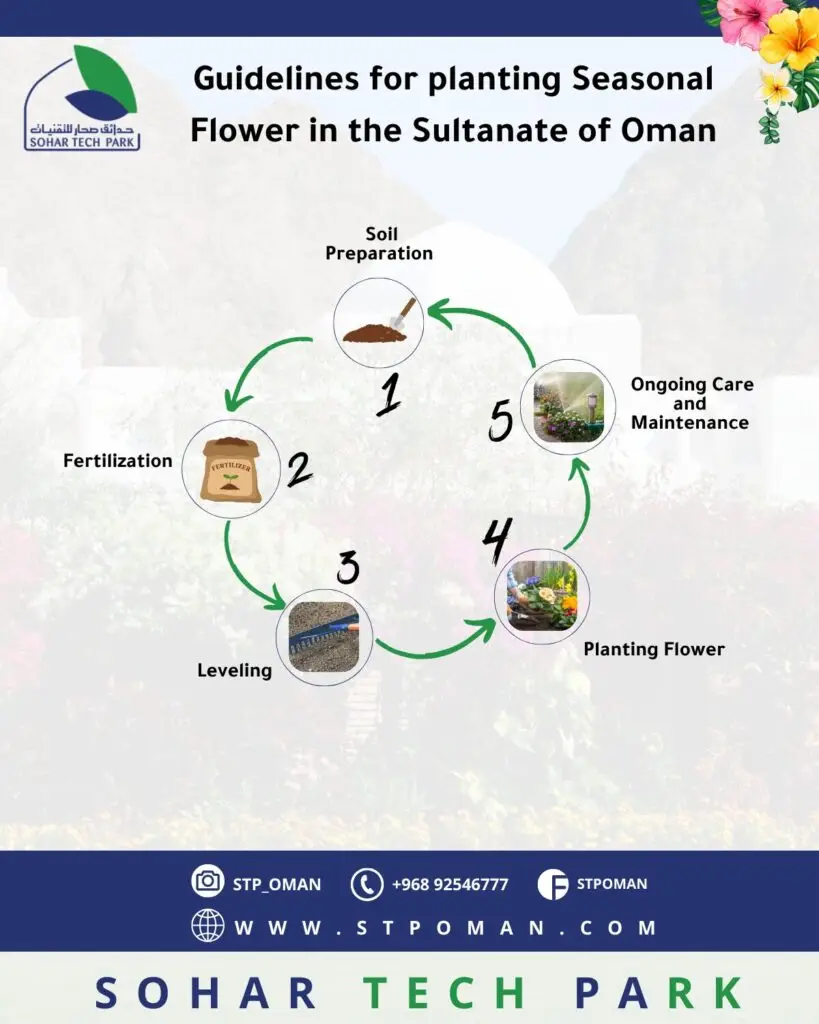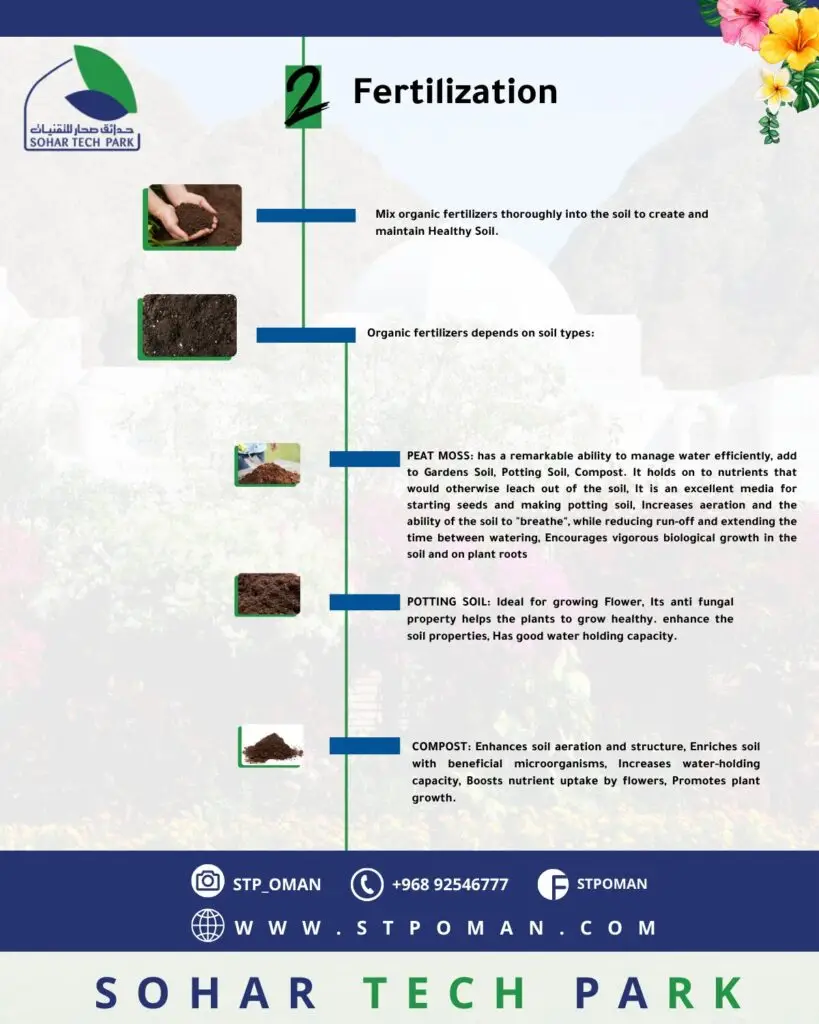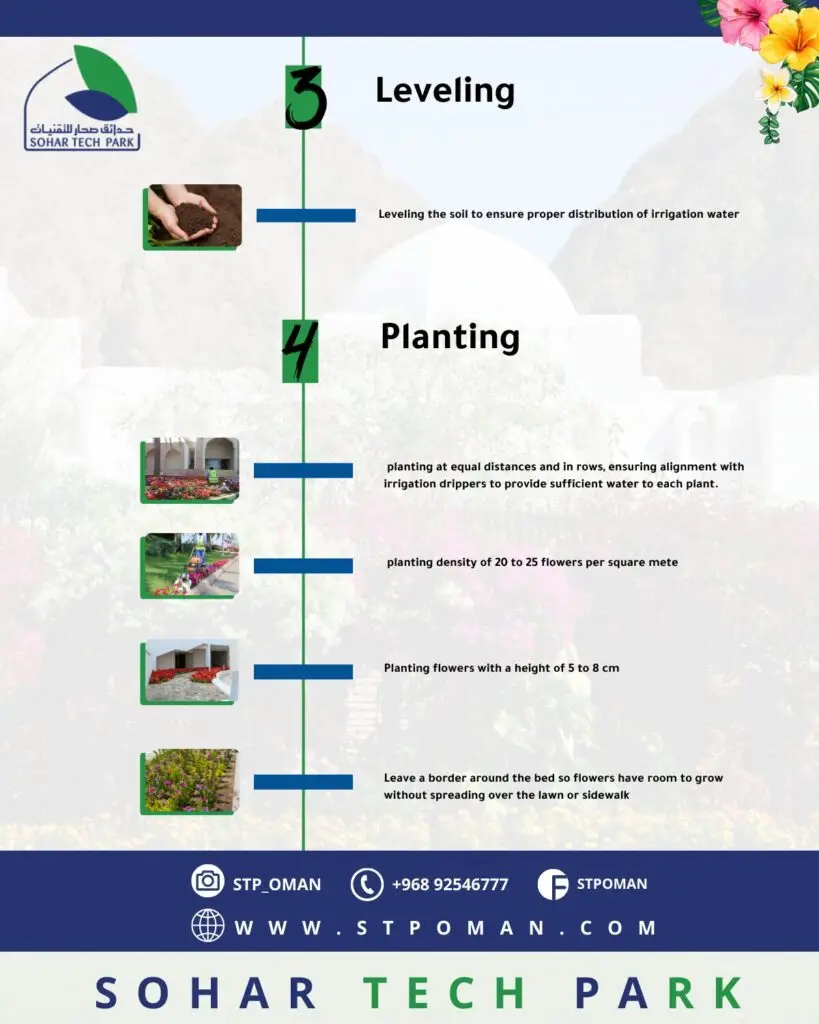A Guide to Planting Seasonal Flowers: Sultanate of Oman

The Sultanate of Oman, with its unique climate characterized by hot, arid conditions and occasional monsoon rains, presents challenges and opportunities for seasonal flower planting. Like most of the Arabian Peninsula, Oman has a tropical desert climate, with scorching summers and pleasantly warm, dry winters. There is regional variation between the more humid coastal areas, the arid desert interior, and the mountain regions’ cooler, more Mediterranean climate. This guide will help you navigate the best practices for planting seasonal flowers in Oman’s diverse areas.
Oman’s climate is characterized by:
- High Temperatures: Summer temperatures can exceed 40°.
- Low Rainfall: Most regions receive less than 250 mm of rainfall annually.
- Humidity: Coastal areas experience high humidity, while interior regions are drier.
- Seasonal Variability: The best planting times vary based on the season.
Seasonal Flower Planting Timeline:
Summer Season (April – September) planting Timeline
- Planting seeds: 1 February
- Start preparation SOIL: 1 March
- Start Planting Time: 15 April to 20 April
Winter Season (October – March) planting Timeline:
- Planting seeds: 1 August
- Start preparation SOIL: 1 September
- Start Planting Time: 15 October to 20 October

Winter Season Recommended Flowers:
- Petunia hybrid
- Zinnia
- Vinca Rosea
- Marigolds (Tagestes)
- Portulaca
- Antirrhinum
- Alyssum
- Viola tricolor
- Dimorphotheca
- Gaillardia Grandiflora.

Summer Season Recommended Flowers:
- Petunia hybrid
- Zinnia
- Vinca Rosea
- Marigolds (Tagetes)
- Portulaca.

Guidelines for planting Seasonal Flower in the Sultanate of Oman:
- Soil Preparation
- Fertilization
- Leveling
- Planting
- Ongoing Care and Maintenance

1- Soil Preparation:
1-1 Removing weeds and their roots to delay them from growing and ensure healthy growth of the seasonal flowers.
1-2 Turning the soil deeply and making sure there are no stones in it.
1-3 Adding sand or perlite to your soil mix ensures proper soil aeration and drainage, allowing roots to access oxygen more easily.
1-3-1 Sand helps to improve drainage and prevents soil compaction, which can suffocate roots1
1-3-2 Perlite, is a volcanic glass that, when heated, expands and creates a lightweight, porous material. Adding perlite to your soil mix increases aeration, allowing roots to access oxygen more easily.

2-Fertilization:
2-1 Mix organic fertilizers thoroughly into the soil to create and maintain Healthy Soil.
2-2 Organic fertilizers depend on soil types:
2-2-1 PEAT MOSS: has a remarkable ability to manage water efficiently, add to garden soil, potting soil, and compost. It holds on to nutrients that would otherwise leach out of the soil, It is an excellent media for starting seeds and making potting soil, Increases aeration and the ability of the soil to “breathe”, while reducing run-off, and extending the time between watering; and it encourages vigorous biological growth in the soil and on plant roots.
2-2-2 POTTING SOIL: Ideal for growing flowers. Its anti-fungal property helps the plants to grow healthy. enhance the soil properties, Has good water holding capacity.
2-2-3 COMPOST: Enhances soil aeration and structure, enriches soil with beneficial microorganisms, increases water-holding capacity, boosts nutrient uptake by flowers, and promotes plant growth.

3- Leveling:
3-1 Leveling the soil to ensure proper distribution of irrigation water
4- Planting:
4-1 planting at equal distances and in rows, ensuring alignment with irrigation drippers to provide sufficient water to each plant.
4-2 planting density of 20 to 25 flowers per square mete
4-3 Planting flowers with a height of 5 to 8 cm
4-4 Leave a border around the bed so flowers have room to grow without spreading over the lawn or sidewalk

5- Ongoing Care and Maintenance:
5-1 Watering: Keep soil moist but not waterlogged, with frequent watering until plants are well-established
5-2 Fertilize liberally with a 100% slow-release fertilizer and leave it on the soil surface (NPK).
5-3 Deadheading: Remove spent flowers to encourage continuous blooming and prevent self-seeding
5-4 Weeding: Regularly remove weeds to compete with your plants for nutrients and water.
5-5 Pest and Disease Control: Monitor for pests and diseases and take appropriate action if necessary



